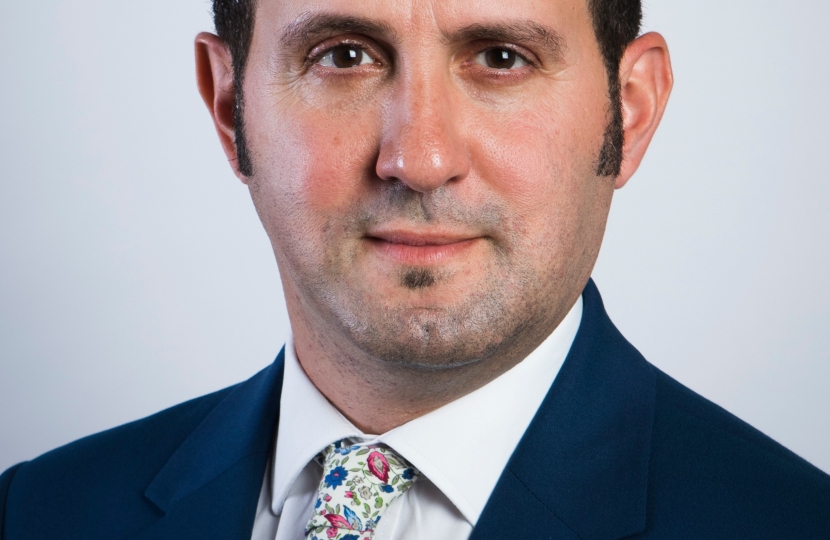
Key points – statistics on testing and PPE in Sussex:
- In the week of 6 April, the advice from officers at the council was that no council run service had run out of PPE stock. A further supply drop into the Brighton Centre took place on Good Friday, and officers again emphasised at the time that the city has a good supply of PPE. A further PPE drop is expected today (17 April 2020) but it is not expected to be as large as previous drops. The NHS nationally and in Sussex are reporting significant shortage of access to gowns.
- In Sussex, a facility opened at the Gatwick Airport North Terminal last week, initially processing 300 tests for Sussex and 300 for Surrey, for NHS staff primarily. Three additional local testing hubs are opening this week. These will include the Amex, taking testing capacity in Sussex to 1,100 tests a day. It is likely that the Gatwick facility will end to prepare the airport for re-opening.
- Within the community, only 2 deaths relating to COVID19 were reported up to the week of 6 April. What we know for certain is that hospital deaths in the city from COVID19 have increased sharply over the past few days, increasing from 14 reported on 7 April to 60 reported on 16 April.
- We know from the CQC data that the current total number of Residential and Nursing homes and beds in city is 92 care homes, 2055 beds. Assuming a 90% occupancy rate as advised by officers, that gives us 1,800 care home residents across the city. It is in this sector where 2 deaths have been registered so far.
PPE is one of the key issues making headlines since coronavirus reached the UK back in February. The other issue is how we as a country, through our various institutions, report deaths from COVID19, both in hospitals and in care homes. Both issues are not so straightforward to un-tangle and both tend to be polarising, politically, socially and clinically. How best then to explore some of those aspects without falling into the trap of apportioning blame. Let’s see if this works. This is meant to be a sincere effort to offer answers given the facts as we know them today, 17 April 2020. Things do tend to move pretty quickly though.
The latest guidance from Government, and this has as you would expect evolved as the virus continued to spread, is that clinicians, in a hospital, primary care or community care setting working within two metres of a suspected or confirmed coronavirus Covid-19 patient should wear an apron, gloves, surgical mask and eye protection subject to a risk assessment. The higher the risk, the more sophisticated the PPE needs to be. For the riskiest procedures on possible and confirmed cases, a long-sleeved disposable fluid-repellent gown (covering arms & body) or disposable fluid-repellent coveralls, the highest specification filtering face mask (FFP3) (fitted after an effectiveness test), a full-face shield or visor and gloves are recommended.
This advice comes from national government and as you would expect, local clinicians working in Brighton and Hove follow this guidance.
Our own local structures in the city and in Sussex for how services are delivered are complex. I am going to try to lay these out in simple terms because even though we are doing things as a local authority, we are also working in partnership with other organisations within systems.
In Brighton and Hove, our health and adult social care director, who’s been doing a great job by the way as I am sure colleagues across the political divide would agree, has a daily call with the pan Sussex strategic control group. This is part of the Sussex Resilience Forum. This is one level at which actions is being organised, a larger than local level.
Hospital admissions for coronavirus across this level and in the city are being monitored daily. In the week of 6 April, the Country Hospital was operating at 60% occupancy. This week, 13 April, it is operating at 50% occupancy. So, in terms of capacity to deal with a surge of COVID19 cases, this part of the care system is operating as it should with clinicians across the board successful in reducing the number of beds occupied. One of the interesting by products of the heath crisis (an economic one is brewing) is a lower attendance of hospital depts e.g. A&E. You may have heard that the Brighton Centre was going to be used as a ‘Nightingale Hospital’. This is now unlikely to happen and is a reassuring sign for the city and the county that the number of infections is under control.
Data is for future COVID19 hospital admissions is being modelled with this showing peaks will be lower than originally anticipated but going on for longer, well into the summer months. Lower death rates are also projected as is a lower need for critical care. All of this is of course good news, unless you or a relative or a friend are in hospital right now suffering the effects of the virus.
On PPE supplies in the city, in the week of 6 April, the advice from officers at the council was that no council run service have run out of PPE stock. Supplies were low but not to the extent that this was affective services. Supplies were being procured and managed centrally through government and the city received emergency supplies into the Brighton Centre on the night of 6 April. These included aprons, masks, eye goggles, gloves. Hand sanitiser was procured separately. This inventory was being managed by officers and distributed according to need.
A further supply drop into the Brighton Centre took place on Good Friday, and the city officers have again emphasised that the city has a good supply of PPE. Government is setting up a clipper service to ensure future supplies and the city can continue to rely on the national drop service in the meantime.
Another area of concern for councillors and officers are Care Home in the city, especially given the headlines in the press in recent days, in the city and nationally. What I would say at this point in time is that the headlines in our own press in the city, and in the national ones, such as the Independent, will not stand up to scrutiny given the evidence available through numbers. I believe that they were right to highlight an issue, but I also strongly believe that they were wrong to peddle stories without evidence to back these up.
Death is never an easy thing to deal with for anyone involved. Not even for the statisticians. As a local councillor, I have been consistently asking for clarity around the number of deaths from COVID19 in the community, that is, apart from hospital deaths. How these are reported cuts across multiple organisations and in that respect is unfortunate. Within the community, only 2 numbers of deaths relating to COVID19 were reported up to the week of 6 April. What we know for certain is that hospital deaths in the city from COVID19 have increased sharply over the past few days, increasing from 14 reported on 7 April to 60 reported on 16 April.
In broad terms, death data remains of poor quality in local authority areas, and we do not yet have reliable data on Care Home deaths. What we do know is that Care Homes in the city are not accepting new admissions from hospitals if they have not been tested first so their population remains more or less stable.
Having looked into the Care Home population in England, he Care Quality Commission says there are 15,517 residential and nursing homes providing support for older and disabled people in England, with an estimated 457,361 beds available. Death data for this population varies between 1,000 noted by Care England versus the 217 pan England data (not split by local authority) noted in Office for National Statistics figures released up until 3 April 2020. Across England, care home residents and social care staff with coronavirus symptoms are going to be tested as capacity increases. More than one thousand care workers have already been checked across the country.
In Brighton and Hove, the Care Quality Commission also capture data of all care homes in city with respect to the number of beds. Due to the way that Care Homes beds are managed with both self-funding and LA funded clients it is difficult to ascertain the total number of vacancies. We know from the CQC data that the current total number of Residential and Nursing homes and beds in city is 92 care homes, 2055 beds. Assuming a 90% occupancy rate as advised by officers, that gives us 1,800 care home residents across the city. It is in this sector where 2 deaths have been registered so far.
I hope this information contextualises for you some of the support work going on in the city. There will be more to come. Until then, stay safe and well.


